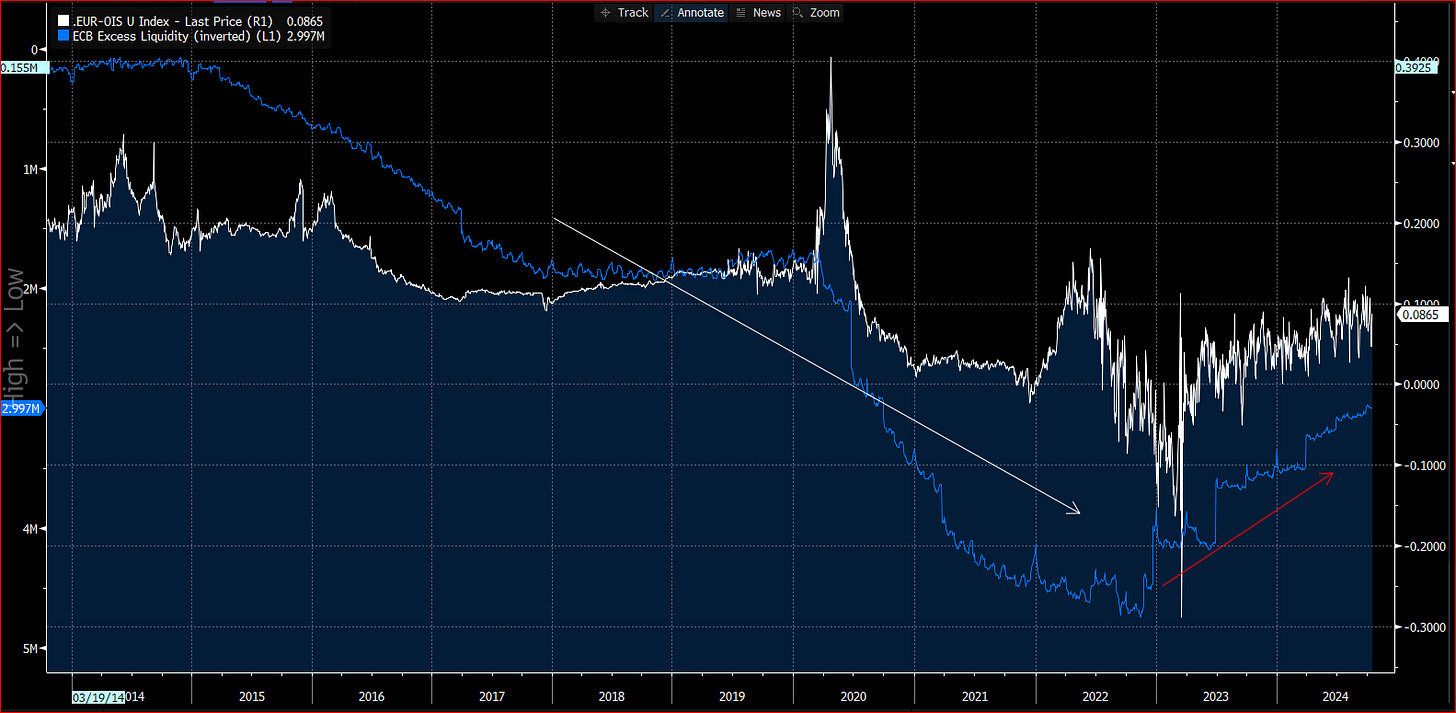Good morning everyone, today we will take a short walk through the world of short-term rates, specifically in the Euro zone.
Until a few years ago, the Euribor rate was the only reference rate for short-term rates but a series of challenges as:
manipulations (in 2012 a group of big banks were fined for maniupulating LIBOR, closely related to Euribor);
panel size, lack of transparence and reliability (calculation method was not transparent and based on a panel of banks rates at which the latter would have been willing to lend to each other and not actual market rates).
To overcome these problems, therefore, the ESTR was created, a rate calculated directly by the ECB and based on real overnight transactions on the Eurozone market. Both are unsecured, but slightly different. Let’s look at the differences:
ESTR: It is an index completely under the control of the ECB and is based on real market data, offering greater transparency and reliability;
Euribor: Although historically linked to the EBF (European banking federation), it is undergoing a transition towards a more independent calculation based on market data to avoid being cut off from major money market benchmarks (https://www.emmi-benchmarks.eu/benchmarks/euribor/methodology/)
Due to the way they are constructed (ESTR on real transactions, Euribor on panel) the ESTR is therefore more reactive to changes in monetary policy and therefore a good proxy of the classic BOR/OIS spread, with the Euribor having more credit risk due to:
ESTR direct link with ECB and so a better guarantee of reliability;
Market depth of the overnight unsecured market that creates the calculation base of real transactions of the ESTR.
In some of the previous credit risk-off episodes (2008, 2011 and 2020) that were associated with a widening in credit spread of CDS (in blue below the Itraxx CDS Main, as for IG credit), and of ASW of bund (in orange, the difference between swap rate and yield of 10y bund), the basis calculated as Euribor 3M - ESTR 3M widened evidently.
Before the ESTR introduction in 2019, the overnight reference index was Eonia, that suffered from the same problems of Euribor (despite calculated only for overnight deposit, but always as a panel). For transitionary period the assumptions are that Eonia was calculated as a Estr+8.5bp.
But after the GFC, and then the peripheral crisis, an elephant broke into the glassware, effectively changing the cards on the table. I'm talking about central banks and the ever-increasing use of their balance sheets to buy securities and try to get out of the specter of deflation. Below, in the graph, the central bank's excess liquidity , inverted (continuously growing since 2013-2014, due to purchases of government and corporate bonds), which has increasingly crushed the differential between Euribor and ESTR, to the point of making them negative.
Now, with CB trying to reduce their balance sheet QT), this gap should widen and there is an estimate of the Euribor/ESTR widening 2bp for year for the next couple of years.
Recently the most important derivatives markets have introduced their futures with the underlying ESTR 3Mm and the open interest has gradually risen for everyone, triggering its own battle for supremacy. For now, the contract listed on ICE (TKY1) and Eurex (JDB1) are dominating. The underlying for all these futures is the 3-month ESTR, which makes it comparable to the Euribor future contract, with the 3-month Euribor as underlying.
The introduction of this type of contract adds a tool for traders to trade the Bor/OIS basis and to cover any flows deriving from several different exposures linked to the different underlying.
Now I will talk in more detail about an interesting trade regarding this spread and how to best play it.






